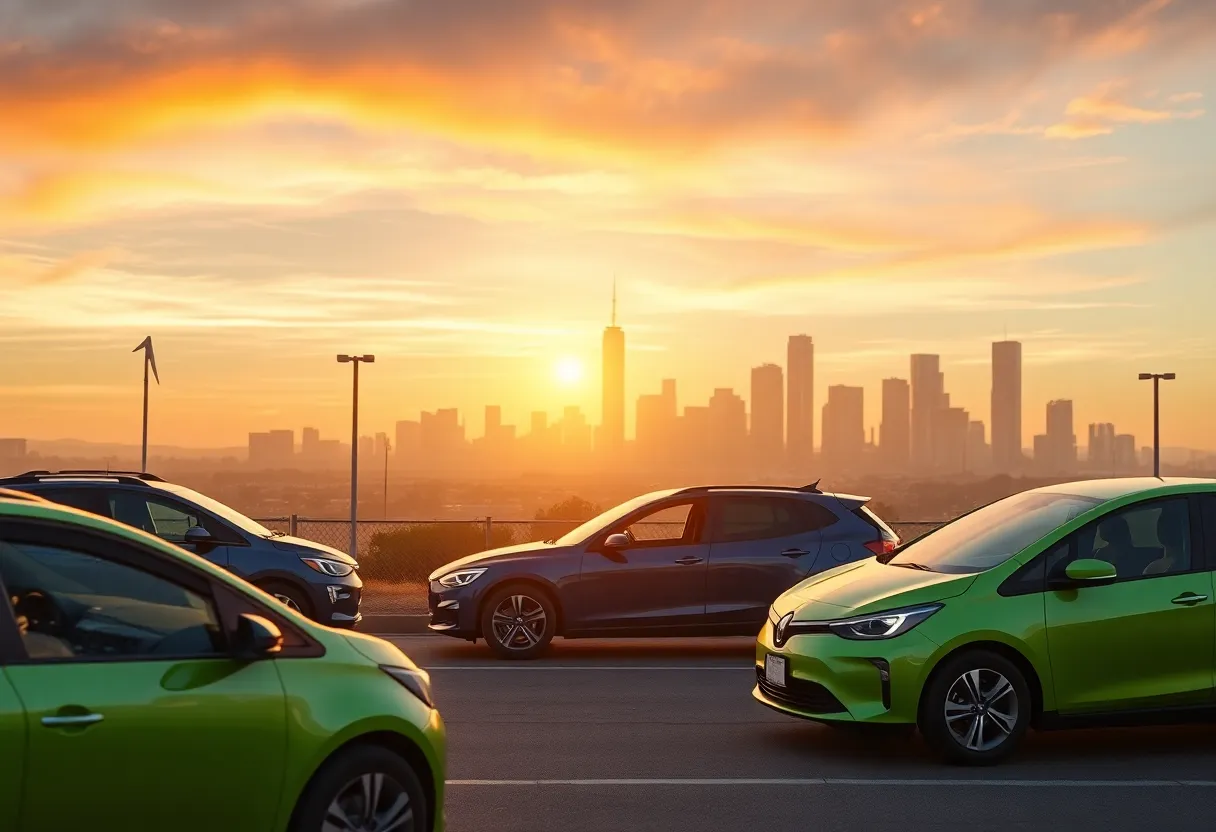News Summary
The U.S. Senate is set to vote on resolutions that could block California’s stringent vehicle emissions standards, which aim to phase out gas-powered cars by 2035. The ongoing debate highlights the conflict between state and federal rights regarding clean air regulations. While Republicans argue these standards impose federal mandates, Democrats defend California’s authority to set higher standards due to its air pollution challenges. The outcome may significantly impact both state environmental policies and the future of electric vehicle adoption across the country.
California Faces Senate Vote on Emissions Standards
The U.S. Senate is set to vote this week on resolutions aimed at blocking California’s stringent vehicle emissions standards, which include a groundbreaking rule to phase out new gas-powered cars by 2035. The proposed resolutions are part of a broader national debate on clean air regulations, which has heightened in recent weeks as Senate Majority Leader John Thune (R-S.D.) announced the consideration of the House-passed measures intended to roll back California’s regulations.
Final votes on these resolutions are expected soon, possibly within the week. Notably, the Senate Parliamentarian and the U.S. Government Accountability Office have both concluded that California’s policies do not qualify for the Congressional review mechanism being used by some senators. This framework has brought forth considerable debate regarding states’ rights to establish their own emissions rules.
Arguments For and Against the Resolutions
Senate Republicans argue that California’s emissions standards will impose a de facto nationwide electric vehicle mandate that could negatively affect consumers, the economy, and the energy supply. Critics, including Senator Thune, describe the state’s regulations as an improper extension of the Clean Air Act. This assertion highlights concerns that the California rules exceed reasonable limits of federalism and intrude into the rights of individual citizens.
In response, Senate Democrats strongly oppose the GOP’s efforts, raising issues about the processes being employed to challenge California’s authority. Senate Minority Leader Chuck Schumer criticized these tactics, warning they resemble a ‘nuclear’ option that undermines traditional voting thresholds and legislative norms.
California’s Emissions Standards and Impact
Historically, California has been granted the authority to set higher emissions standards than federal regulations due to the state’s significant air pollution challenges. Governor Gavin Newsom announced in 2020 an ambitious plan to ban the sale of new gas-powered vehicles by 2035, as part of a comprehensive effort to reduce transportation-related emissions and align with broader climate goals. The state has set specific targets for automakers, requiring progressively increasing sales of zero-emission vehicles, aiming for 43% by 2027, 68% by 2030, and reaching 100% by 2035.
While new gas cars are set to be phased out, used gasoline vehicles, plug-in hybrids, and hydrogen-powered alternatives will still be available for purchase. Over a dozen states have adopted California’s emissions regulations, but there are jurisdictions such as Vermont that have paused their enforcement of these policies.
Concerns over Infrastructure and Electric Vehicle Adoption
As California moves forward with its ambitious carbon neutrality aims—including achieving net-zero greenhouse gas emissions by 2045—there are rising concerns about whether the state’s electric grid can adequately support the anticipated surge in electric vehicle (EV) adoption. To support EV infrastructure, California is investing in expanding charging station access, enhancing the electrical grid, and facilitating the installation of curbside charging units in urban areas.
Recent trends indicate that California residents are increasingly purchasing electric vehicles, which comprise a notable percentage of the total U.S. EV registrations. Federal tax credits are currently offered to incentivize these purchases; however, proposed Republican measures may threaten the continuation of these incentives. Additionally, Uber has expressed doubts about meeting its electric vehicle goals, citing high prices and inconsistent government policy support.
Future of Clean Transportation in California
California’s targets include having 25% of all private vehicles on the road as electric by 2030 and 100% by 2040. Achieving these milestones will require a significant increase in the availability of public charging stations and resources to boost accessibility, particularly for those without private garages. Programs like San Francisco’s curbside charging initiative represent attempts to mitigate this challenge and expand electric vehicle ownership, providing public charging options at rates ranging from $1 to $5 per hour.
As the Senate prepares to vote on resolutions targeting California’s emissions standards, the outcome could have substantial implications for state environmental policies and the future of electric vehicle adoption across the country.
Deeper Dive: News & Info About This Topic
- San Francisco Chronicle: Electric Car Cost in California
- Google Search: California emissions standards
- CBS News: First Curbside EV Chargers Installed in San Francisco
- Wikipedia: Electric Vehicle
- NBC Bay Area: Electric Vehicle Charging Program in San Francisco
- Encyclopedia Britannica: Electric Vehicle

Author: STAFF HERE SAN DIEGO WRITER
The SAN DIEGO STAFF WRITER represents the experienced team at HERESanDiego.com, your go-to source for actionable local news and information in San Diego, San Diego County, and beyond. Specializing in "news you can use," we cover essential topics like product reviews for personal and business needs, local business directories, politics, real estate trends, neighborhood insights, and state news affecting the area—with deep expertise drawn from years of dedicated reporting and strong community input, including local press releases and business updates. We deliver top reporting on high-value events such as Comic-Con International, San Diego County Fair, and San Diego Pride Festival. Our coverage extends to key organizations like the San Diego Regional Chamber of Commerce and United Way of San Diego County, plus leading businesses in biotechnology, healthcare, and technology that power the local economy such as Qualcomm, Illumina, and Scripps Health. As part of the broader HERE network, including HEREAnaheim.com, HEREBeverlyHills.com, HERECostaMesa.com, HERECoronado.com, HEREHollywood.com, HEREHuntingtonBeach.com, HERELongBeach.com, HERELosAngeles.com, HEREMissionViejo.com, and HERESantaAna.com, we provide comprehensive, credible insights into California's dynamic landscape.





